Battleship Bismarck.
History, development, final cruise, specifications, pictures and 3d model of the German warship.
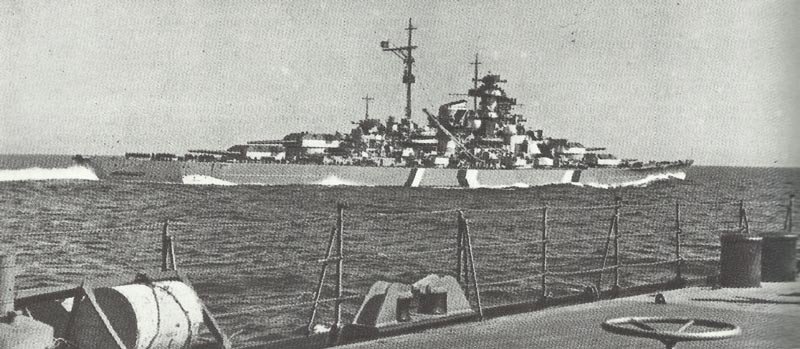
Design, construction and final cruise of battleship Bismarck.
German Battleship Bismarck
Table of Contents
Bismarck class (two ships: Bismarck and Tirpitz)
Type: Battleship
The German battleship Bismarck was one of the most famous warships of World War II. This article is about the design, construction and final cruise of battleship Bismarck.
Overview
The Bismarck had a standard displacement of 41,673 tons and a full load displacement of up to 51,700 tons.
Its overall length was 251 m (823 ft 6 in), with a waterline length of 241.6 m (792 ft 8 in).
The Bismarck was powered by steam turbines generating 138,000 to 150,000 shaft horsepower.
Its main armament consisted of eight 38 cm (15 inch) guns. The armor included a main belt that was 320 – 270 mm thick.
The Bismarck had a top speed of around 30 knots (56 km/h; 35 mph), slower than some battlecruisers like the HMS Hood but typical for battleships of the era.
Overall, the Bismarck was one of the largest and most powerful battleships ever built, designed to outgun enemy ships. However, it was sunk in May 1941 after an intense battle in the Atlantic.
History
In the late 1920s the German shipbuilders therefore started with a considerable backlog compared with their colleagues in other major powers. When designing the Gneisenau and Scharnhorst they could still fall back on the design for the Mackensen class dating from the World War One. But for a modern, sufficiently fast ship of the desired size there was no suitable design from World War One. While the Gneisenau class comparable foreign ships were either smaller (as the French Dunkerque class) or had been built in World War One, the new battleship should be superior to any rival, of which most were the result of decades of research and development work, the Germans simply missing. They had not even the time to catch up this lead. Theoretical Studies on a battleship had been recorded in 1933.
The Anglo-German Naval Agreement of June 18, 1935, gave the Germans plenty of still available battleship tonnage to construct three battleships each of 35,000 tons standard displacement. The construction contracts for two units were awarded in early 1936. Under the pressure of time the German shipbuilders used as the basis for the new ships the draft of the Baden class from World War One. The plan had to be increased to meet the demand for increased speed by 6 knots, the enormous strength of the anti-aircraft weaponry and an improved torpedo protection. In the last-mentioned property the planners came in good stead, because they had to keep the draft as low as possible because of the flat German coastal waters. As with the Japanese Yamato class they therefore widened the hull, so that an excellent torpedo protection could be incorporated into the ships.
Although the result was an undisputed strong war ship, the battleship Bismarck could have to be even more powerful. The lack of research on protection systems meant that contrary to foreign rivals, in which the main armored deck sat directly or close to the armored belt and thus the telecommunications equipment protected, it was at Bismarck near the ship’s bottom. This means, her communications were literally unprotected, a fact that contributed to their quick and easy destruction by the British battleships Rodney and King George V.
Just as it had been felt at the German ships 25 years before during the Battle of Jutland, the Bismarck was missing the necessary protection of the rudder system, which made her the escape impossible. Inadequate research in the field of multi-purpose medium caliber weapons meant that the Bismarck received separate medium and heavy anti-aircraft batteries, which in turn made her much too large for her armament. Not carried out research work also meant that the German armor could not compete with the British or American standards. Her armored conning tower, which was theoretically protected against by battleship artillery, was switched off at an early stage of the battle by a British 8-in-shell. Like most heavy German units of WW2 the Bismarck had – considering to her size – poor sea-going properties. Finally, there were within the German shells too many duds: just one of the shells, which hit HMS Prince of Wales, detonated as planned.
But the draft of the Bismarck had also some good points, however. The fire control system was quite good, especially that for the anti-aircraft guns. She also had a radar for her artillery. It proved extremely difficult to bring her to sinking (although this was much less important than the ease with which she could be put out of action). Only after the crew detonated explosive charges and the cruiser HMS Devonshire achieved torpedo hits, she finally sank.
Bismarck launched on February 14, 1939, at the Blohm & Voss shipyard in Hamburg and entered service on August 24, 1940. She started immediately thereafter with intensive sea trials in the Baltic Sea until May 1941.

Animated 3D model of battleship Bismarck
Specifications for battleship Bismarck
Specifications:
Bismarck | specification |
|---|---|
Type | Battleship |
Displacement | 41,700 tons |
Displacement (full loaded) | 50,966 tons |
Length | 823 ft |
Beam | 118 ft |
Draught | 30 ft 7 in |
Boiler | 12 Wagner-boiler |
Machinery | Blohm and Voss 3-shaft, geared steam turbines |
Power | 150,000 hp |
Oil | 7,461 tons |
Speed | 30.1 kts |
Range | 9,280 nm at 16 kts |
Crew | 2,092 |
Armament:
Bismarck | specification |
|---|---|
Main Armament | eight 38-cm (15-in) guns |
Secondary Armament | 12 x 15-cm (5.9-in) guns |
Anti-Aircraft | 16 x 10.5-cm (4.1-in) AA, 16 x 37-mm-AA, 12 x 20-mm AA |
Aircrafts | 6 |
Armor Protection:
Bismarck | thickness |
|---|---|
Side (belt) | 57 - 127.2 in |
Deck | 19.7 in |
Main deck | 11.8 in |
Armor deck | 31.5 - 47.25 in |
Main artillery | 51.2 - 141.7 in |
Barbetts | 86.6 in |
Secondary artillery | 7.9 - 39.4 in |
Service Statistics:
Bismarck | figures |
|---|---|
Laid down | July 1, 1936 |
Launched | February 2, 1939 |
Completed | August 24, 1940 |
Fate | sunk May 27, 1941 |
Battleship Bismarck in WoWs
Seven sinking and last minute victory with the battleship Bismarck in the F2P game World of Warships (WoWs):
If you are new to World of Warships, you can download the free game client here:

References and literature
Fighting Ships of the World (Antony Preston)
Kriegsschiffe von 1900 bis heute – Technik und Einsatz (Buch und Zeit Verlagsgesellschaft)
The Illustrated Directory of Warships from 1860 to the present day (David Miller)
Kriegsschiffe 1939-45 (Heyne-Bildpaperback)
Flotten des 2. Weltkrieges (Antony Preston)
Die Schlacht im Atlantik (Andrew Kershaw)
The Encyclopedia of Weapons of World War II (Chris Bishop)


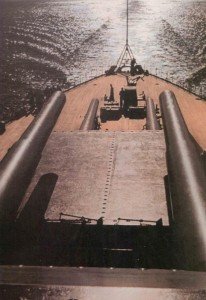

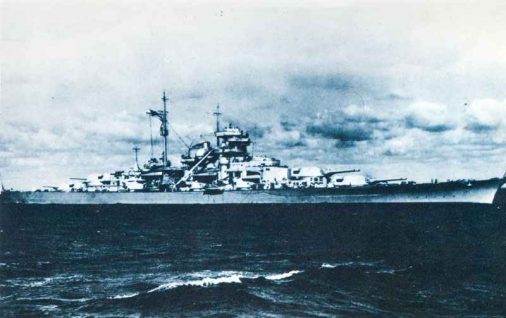
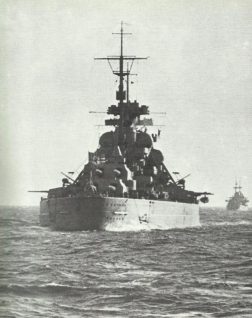
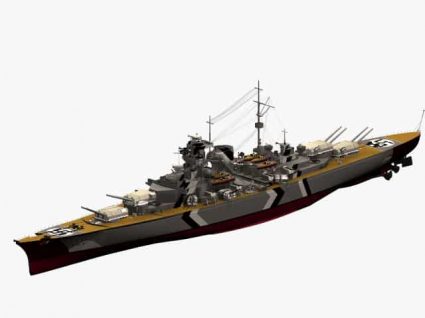
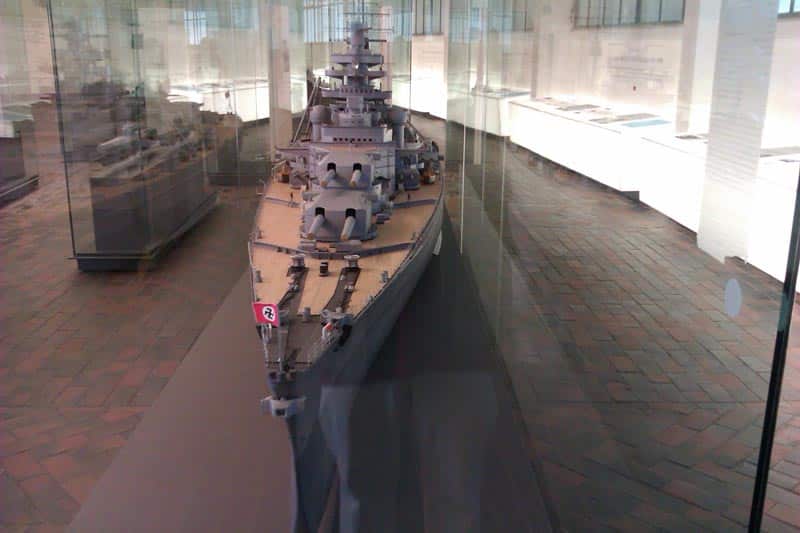


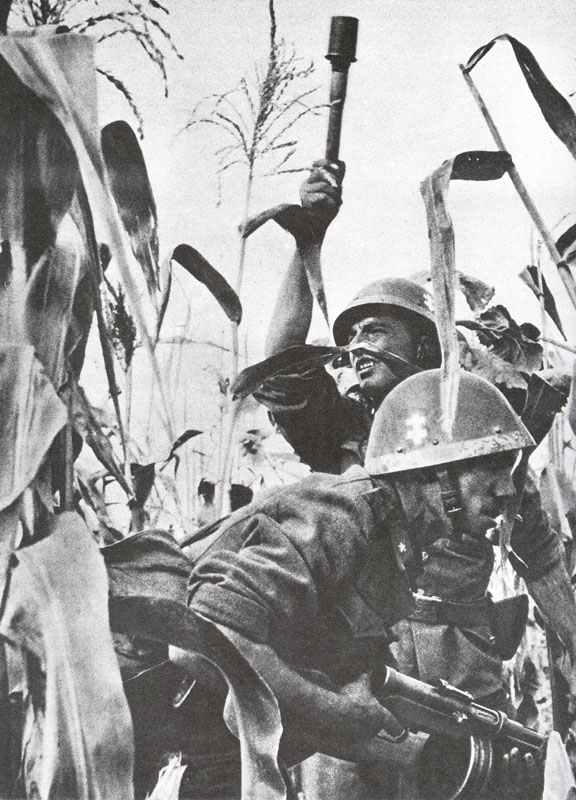
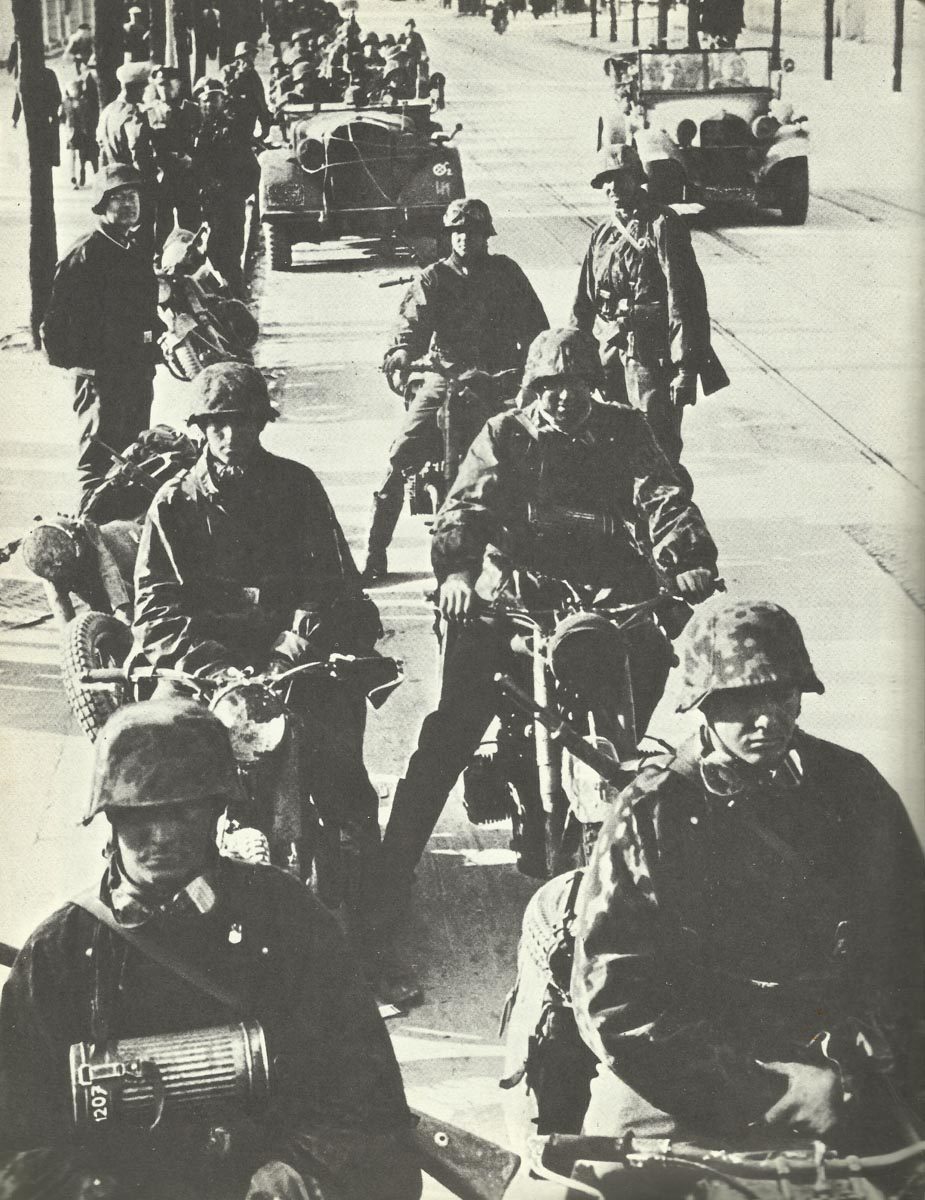
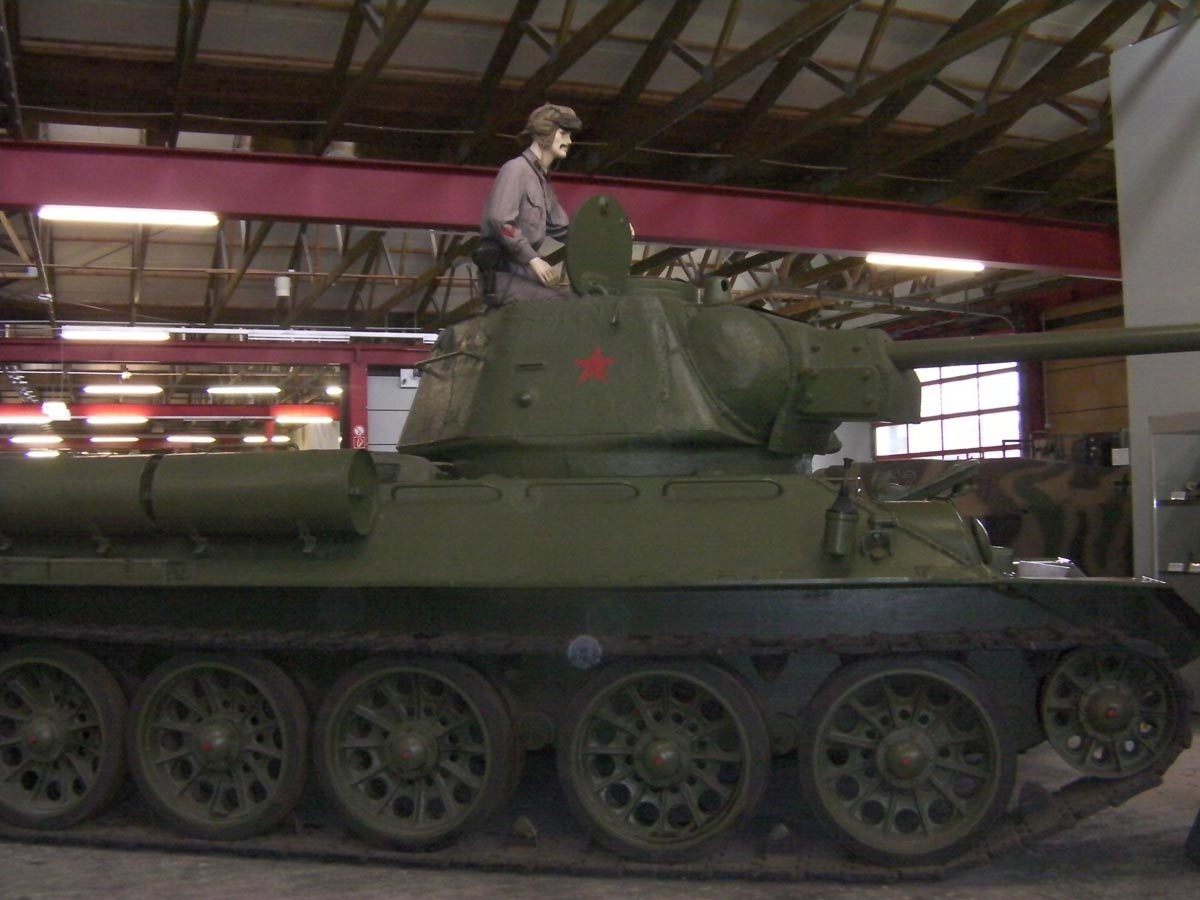
Why did the Kapitan of Bismarck fight his ship so poorly against the virtually helpless “King George V” AND the “shadowing” cruisers? Her Wurzburg RADAR was a true fire-control RADAR, while the British had only (effective) “search” RADAR on the small cruisers. Personally, I would have pounded the King George into small pieces and silenced her RADIO before hualing off. In the fog later that night, I would have stealthily slowed to let the cruisers into my 38cm gun range. One hit from them would be like a semi striking a puppy-even her 5.9’s would have been devastating against 8000 ton light cruisers. Run home to fix the “dent on the fender” fuel leak, and run rampant against the British convoys with Prinz Eugen, making the VERY limited number of U-Boats much more effective AND running the Home Fleet ragged.
Without going into Bismarck’s particulars, it’s interesting that no matter how large the projected BB design, from H39 to H44, the secondary and tertiary batteries remained the same as Bismarck. 6×2 5.9″/55 and 8×2 4.1″/65 AA
One would expect that the last designs from 1943 on would have carried a 5″ or 5.1″ DP???